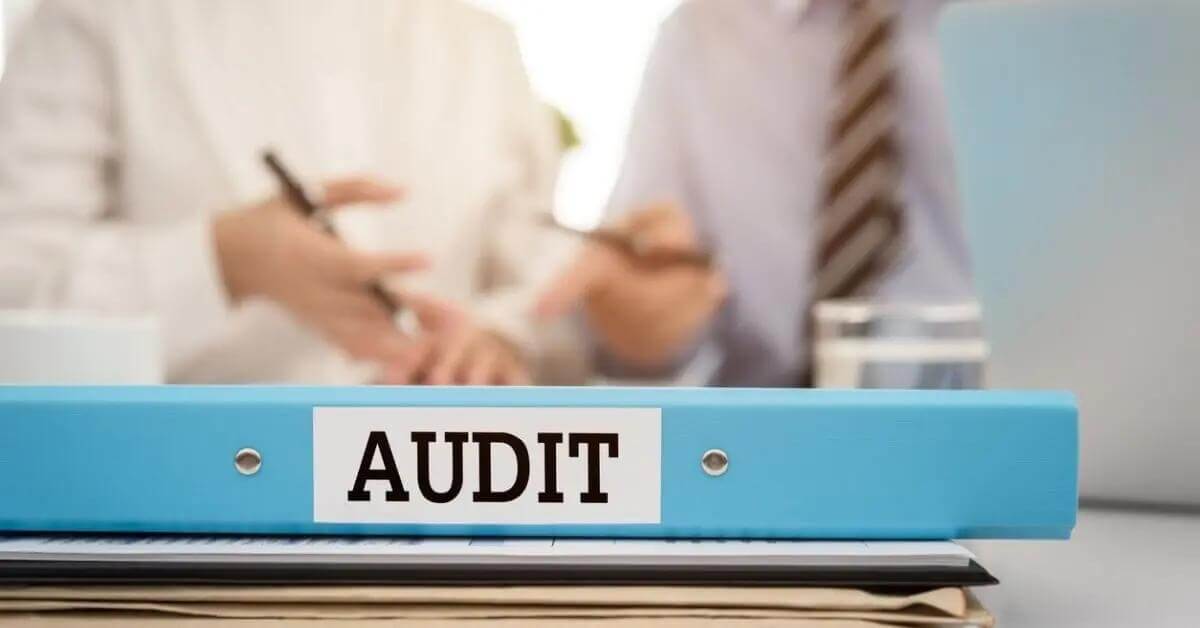Are you a farmer or rural small business owner seeking to make your operations more energy-efficient?
If so, the government wants to help pay for your efforts through the REAP program.
Standing for the Rural Energy for America Program, REAP is administered by the U.S. Department of Agriculture (USDA) Rural Busines Service. The program provides grants and loans to qualifying workers located within eligible regions. Its goal is to relieve the financial burden that rural workers feel when they attempt to embrace sustainable resources, including solar and wind energy systems, among others.
Today, we’re taking an in-depth look at everything that this program entails, including how to apply for assistance and recent legislative updates that could shape it moving forward.
Ready to learn more? Let’s take a look.

Energy Use in the Agricultural Industry
From fueling heavy machinery to fertilizing soil, drying grain and cooling milk, it’s no secret that agricultural workers require a ton of energy.
However, there are myriad ways they can help curb this consumption.
By swapping out even one piece of their standard equipment for an energy-efficient alternative, farmers and rural workers can make a major dent in their carbon footprint. At the same time, many of these innovations can also deliver valuable cost savings and efficiency gains.
For instance, research shows that by swapping the standard motors on their vacuum pumps for energy-efficient ones and keeping those systems well-maintained, dairy farmers could save between 50% and 80% on utility expenses while doubling output.
While the price to install such systems has dropped in recent years, they can still be outside of the budget of many rural workers.
This is where REAP can make an important difference.

What is the REAP Program?
REAP is a program administered by the USDA to help farmers and rural businesses afford energy-efficient upgrades and improvements across their enterprise. This is made possible by the issuance of grants and loans to the individuals at the helm of these operations.
The USDA breaks the program into two main categories, as follows:
- Financial assistance to facilitate energy-efficient improvements and the purchase of new renewable energy systems
- Financial assistance to perform energy audits and develop renewable energy initiatives (eligible entities)
Determining Eligibility
To qualify to receive support under REAP, agricultural producers and small business owners must not have any of the following:
- Outstanding delinquent federal taxes
- Outstanding debt
- Outstanding judgment or debarment
In addition, they must meet one of the following terms:
- Receive at least 50% of their gross income from agricultural operations
- Work as a small business owner in the unurbanized area of a city or town with a population of fewer than 50,000 inhabitants
You can go here to check a list of eligible business addresses to see if yours qualifies. Note that this geographical limitation only applies to business owners. Agricultural producers can be in either rural or non-rural environments.
Next, let’s take a look at each of these funding categories in greater detail.
Financial Assistance for Energy-Efficient Improvements and Purchases
Farmers, ranchers, and small business owners alike can apply for REAP assistance to make energy-efficient improvements to their existing operations or install new purchases to help lower their energy use. The USDA’s language on this provision is available here.
Financial assistance can be in the form of either a grant or a loan. To be eligible, they have to demonstrate that they plan to use this money to perform one of the following initiatives:
- Improve the energy efficiency of their current operations (non-residential buildings and facilities)
- Purchase, install or construct new renewable energy systems (e.g. wind, solar, hydropower)
Types of Programs Allowed
Individuals may use this category of REAP funding to install new renewable energy systems, such as:
- Hydropower (not to exceed 30 megawatts)
- Hydrogen power systems
- Small and large wind power generation systems
- Small and large solar power generation systems
- Geothermal power systems
- Ocean power generation systems (tidal, thermal, current)
- Biomass systems
Or, if a full replacement isn’t necessary or desired, individuals can also use the funds to make improvements and upgrades to their existing systems and setups. In this case, they can apply the assistance to help cover the purchase, installation, and construction of the following:
- Energy-efficient HVAC systems
- Energy-efficient insulation
- Energy-efficient lighting
- Energy-efficient doors and windows
- Energy-efficient refrigeration units
- Solar, electric or gravity pumps to accommodate sprinkler pivots
- Electric irrigation motors (in lieu of diesel models)
Assessing Eligibility Requirements
Before rewarding any assistance, the USDA will take a close look at how each applicant plans to improve his or her current operations with energy-efficient systems. Specifically, they will analyze the following criteria to determine if a project is eligible or not:
- What is the type of renewable energy the applicant plans to purchase?
- About how much energy will the renewable energy system generate?
- What are the expected environmental benefits that the renewable energy system will provide?
- How much energy savings will the recipient actually derive from this effort (determined by an energy audit)?
- How long will it take until the energy savings generated by this new system equals its cost?
- What is the overall level of anticipated energy efficiency of the renewable energy system?
These are just a few of the important questions they will ask. A thorough energy audit, interview, and discussion are often required to learn these details and make sure the investment will generate the kinds of returns expected.
Important 2019/2020 Deadlines: Energy-Efficient Improvements and Purchases
The USDA maintains a calendar of deadlines that qualifying individuals should take note of when applying for assistance through REAP to cover energy-efficient upgrades and purchases. These are as follows:
- Applications for grants of $20,000 or less: October 31, 2019 or March 31, 2020
- Applications for loan/grant combinations of $20,000 or less: October 31, 2019 or March 31, 2020
- Applications for unrestricted grants: March 31, 2020
- Applications for loan/unrestricted grant combinations: March 31, 2020
The USDA will accept applications for guaranteed loans on a continuous basis.
Financial Assistance for Energy Audits and Development Initiatives
An energy audit can be a helpful way to gauge how much power your operation is currently using. However, the tools and techniques used to conduct these audits can be expensive. The same applies to conducting in-depth development studies to better understand ways that government and state-supported entities can mitigate energy use.
To support this research, the USDA also provides financial assistance under REAP to help cover the costs of energy audits and energy development studies. The programs covered include:
- Energy audits
- Renewable energy technical support
- Renewable energy site assessments
While individual agricultural producers or small business owners can apply for REAP assistance under the upgrade/new installation initiative, this category is limited to the following entities:
- State, tribal or local government entities
- Land-grant colleges or universities
- Other eligible institutions of higher education
- Public power entities
- Rural electric cooperatives
- Similar entities approved by the USDA
The funds provided under this initiative can be used to help cover the following costs:
- Project-related salaries
- Project-related travel expenses
- Office equipment
- Project-related administrative expenses (up to 5% of the grant)
Assessing Eligibility Requirements
Similar to the analyzation required to determine the eligibility of energy-efficient upgrades and purchases, the USDA also has a list of factors that can help it determine if an audit or development initiative meets funding criteria. A few of the key questions the agency will ask include:
- Does the applicant have the ability and expertise to provide a professional energy audit or renewable energy assessment?
- What is the geographic scope of the project compared to the location of the identified need?
- How many agricultural producers or rural small businesses will the project help?
- How likely is the project to produce real energy savings or environmental benefits?
- How does the applicant plan to perform outreach and assistance to agricultural producers and small business owners concerning energy efficiency and renewable energy development?
- Does the applicant have the ability to locate and leverage other funding sources?
Important 2019/2020 Deadlines: Energy-Efficient Improvements and Purchases
Individuals seeking to apply for REAP assistance to cover energy audits or renewable energy development assistance should submit applications by January 31, 2020. As with the upgrade/new purchase initiative, the USDA accepts applications for guaranteed loans on a continuous basis.
REAP Funding Limits
While these projects can vary in scale, the USDA does place a cap on how much financial assistance individuals can request. The limits are as follows:
- REAP grant assistance cannot cover more than 25% of the funded activity’s total cost
- Loan guarantees under REAP cannot cover more than 75% of the funded activity’s total cost
- For recipients with both a REAP grant and loan guarantee, the full amount cannot exceed 75% of the funded activity’s total cost
In addition to pre-determined funding limits, there are other administrative duties that certain recipients must fulfill. For instance, if you receive REAP assistance for a project that exceeds $200,000, you must submit a technical report to the USDA that details the way you plan to allocate and spend the money.
In addition, if you plan to use USDA/REAP funding to help pay for an energy-efficiency improvement project, you’re required to submit an energy audit or assessment that details how the proposed project could cut or reduce your current energy use.
REAP Program Grant Terms
If you’re applying for a grant under REAP to install new energy-efficient systems, the following terms apply:
- $2,500 minimum amount
- $500,000 maximum amount
If you’re applying for a grant under REAP to make energy-efficient upgrades, audits or other developments, the following terms apply:
- $1,500 minimum amount
- $250,000 maximum amount
REAP Loan Guarantee Terms
As loan amounts can far exceed grant amounts in terms of dollar value, the USDA enacts strict terms to cover its loan guarantees.
Loans under REAP range from $5,000 (minimum) to $25 million (maximum) with an up to 85% loan guarantee. Each recipient will work with his or her lender to negotiate the rates and terms for each loan, and all of these terms must pass USDA approval.
The maximum terms that recipients must understand and follow include:
- Loans for real estate purchases: 30 years
- Loans for machinery and equipment: 15 years
- Capital loans: Seven years
- Combined loans for real estate and equipment: 30 years
Farm Bill Updates
In 2014, a Farm Bill was passed that reserved 20% of REAP funding to provide smaller grants of $20,000 or less, with the funds kept out until June 30 of each fiscal year. Until that same year, the USDA had a special REAP program provision that authorized the agency to provide up to 10% of available funds to farmers or business owners seeking to perform feasibility studies. In 2014, that provision was eliminated.
In 2018, another Farm Bill passed. This time, Congress voted to keep REAP alive until at least 2023, with the program operating at $50 million annually, an allotment that is protected from change during the bill’s lifetime. In addition, this same iteration widened the types of support that rural workers could request.
How to Apply
The specific, three-tier process that applications will follow was determined under the 2014 Farm Bill. Each application will compete with similar applications in the same tier, meaning that Tier 1 applications compete with Tier 1 applications, and so forth. This helps even the playing field and ensures fair competition.
Tier 1 projects are designated as those that cost no more than $80,000. Tier 2 projects are those that cost between $80,000 and $200,000. Tier 3 projects are those that cost from $200,000 and beyond.
If you believe that you qualify for financial assistance under the REAP program, you can contact your local USDA state office to learn more about the next steps required. You can find a list of the addresses for every state office at this site.

Understanding Tax Requirements the REAP Program
If you’re a farmer, agricultural producer, or qualifying small business owner, you could be missing out on valuable funds available through the REAP program. Taking strides to improve your energy efficiency can help you lower costs, improve team performance and save the environment, all at the same time.
However, while laws like this can be beneficial, we understand that they can also be confusing. This is especially the case when it comes tax time. If you’re awarded a REAP-issued grant or a loan, how do you report your earnings to the IRS? What form should you use to claim this tax credit?
These are only a few of the questions you might have, and we’re here to help answer them.
Contact us today to work with our team of professional tax attorneys. We’re well-versed in this program and can help set you down the right path.








